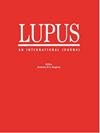中国系统性红斑狼疮住院患者的死亡率和预后因素:一项为期20年的回顾性研究
IF 1.9
4区 医学
Q3 RHEUMATOLOGY
引用次数: 0
摘要
目的 总结过去20年中系统性红斑狼疮(SLE)住院患者的死亡原因和临床特征,以便通过早期发现危重的系统性红斑狼疮来提高系统性红斑狼疮的存活率。方法 在这项病例对照研究中,我们回顾性分析了2002年1月至2022年12月期间的218例系统性红斑狼疮死亡病例,并随机选择了110例系统性红斑狼疮住院患者作为对照。结果9 538名系统性红斑狼疮患者中有218人死亡,其中女性188人,男性30人。死亡率从2002年的4.14%稳步下降到2013年的1.96%,从2014年到2022年保持在1.84%。2002年至2012年的标准化死亡率(SMR)为4.98 [95% CI (4.06-5.89)],2013年至2022年为3.39 [95% CI (2.74-4.04)]。感染、狼疮诱发的多器官功能衰竭综合征(MODS)和神经精神狼疮(NPLE)是主要的死亡原因,分别占总死亡人数的31.19%、15.14%和11.47%。年龄与主要死因有明显关系。逻辑回归分析显示,NPLE[OR=10.772,95%CI(3.350,34.633), p < 0.001]、狼疮肺受累(LP)[OR=3.844,95%CI(1.547,9.552), p = 0.004]、肺炎[OR=3.439,95%CI(1.552,7.621), p = 0.002], 血小板减少[OR = 14.941,95%CI (4.088,54.604), p < 0.001], 肌酐>177 μmol/L[OR = 8.644,95%CI (2.831,26.388), p < 0.001], 谷草转氨酶(AST)> 60U/L[OR = 5.762,95%CI (2.200,15.088), p < 0.001], 总胆红素 > 34 μmol/L[OR = 16.701,95%CI (3.349,83.294), p = 0.001], 更高的系统性红斑狼疮疾病活动指数(SLEDAI)[OR = 1.089,95%CI (1.032,1.149), p = 0.002] 和系统性红斑狼疮损害指数(SDI)[OR = 3.690,95%CI (2.487,5.474), p < 0.001]与死亡呈正相关。系统性红斑狼疮患者的SMR明显高于普通人群。儿童期发病的系统性红斑狼疮患者的预后比成人期发病的系统性红斑狼疮患者差。感染、MODS和非狼疮是三大主要死因。主要器官受累和疾病活动度高是死亡的危险因素。本文章由计算机程序翻译,如有差异,请以英文原文为准。
Mortality and prognostic factors among inpatients with systemic lupus erythematosus in China: A 20-year retrospective study
ObjectiveTo summarize the causes of death and clinical characteristics of systemic lupus erythematosus (SLE) hospitalized patients in the last 20 years to improve SLE survival rates by detecting critical SLE early.MethodsIn this case-control study, 218 SLE death cases were retrospectively analyzed from January 2002 to December 2022, with 110 SLE inpatients chosen at random as controls. The clinical symptoms, causes of death, and risk factors in patients with SLE were investigated.ResultsThere were 218 deaths among 9538 patients with SLE, including 188 women and 30 men. The death rate fell steadily from 4.14% in 2002 to 1.96% in 2013 and remained at 1.84% from 2014 to 2022. The standardized mortality ratio (SMR) was 4.98 [95% CI (4.06-5.89)] from 2002 to 2012 and 3.39 [95% CI (2.74-4.04)] from 2013 to 2022. Infection, lupus-induced multiple organ failure syndrome (MODS), and neuropsychiatric lupus (NPLE) were the leading causes of death, accounting for 31.19%, 15.14%, and 11.47% of overall deaths. Age had a significant association with the major causes of death. Logistic regression analysis showed NPLE[OR = 10.772,95% CI (3.350,34.633), p < 0.001], lupus pulmonary involvement (LP)[OR = 3.844,95%CI (1.547,9.552), p = 0.004], pneumonia[OR = 3.439,95%CI(1.552,7.621), p = 0.002], thrombocytopenia[OR = 14.941,95%CI (4.088,54.604), p < 0.001], creatinine>177 μmol/L[OR = 8.644,95%CI (2.831,26.388), p < 0.001], glutamic transaminase(AST) > 60U/L[OR = 5.762,95%CI (2.200,15.088), p < 0.001], total bilirubin > 34 μmol/L[OR = 16.701,95%CI (3.349,83.294), p = 0.001], higher SLE Disease Activity Index (SLEDAI)[OR = 1.089,95%CI (1.032,1.149), p = 0.002] and SLE Damage Index (SDI)[OR = 3.690,95%CI (2.487,5.474), p < 0.001] correlated positively with death.ConclusionFrom 2002 to 2013, the mortality rate among patients with SLE fell steadily but remained unchanged from 2014 to 2022. Patients with SLE had significantly higher SMR than the general population. Childhood-onset SLE had a poorer prognosis than adult-onset SLE. Infection, MODS, and NPLE were the three leading causes of death. Major organ involvement and high disease activity were risk factors for mortality.
求助全文
通过发布文献求助,成功后即可免费获取论文全文。
去求助
来源期刊

Lupus
医学-风湿病学
CiteScore
4.20
自引率
11.50%
发文量
225
审稿时长
1 months
期刊介绍:
The only fully peer reviewed international journal devoted exclusively to lupus (and related disease) research. Lupus includes the most promising new clinical and laboratory-based studies from leading specialists in all lupus-related disciplines. Invaluable reading, with extended coverage, lupus-related disciplines include: Rheumatology, Dermatology, Immunology, Obstetrics, Psychiatry and Cardiovascular Research…
 求助内容:
求助内容: 应助结果提醒方式:
应助结果提醒方式:


